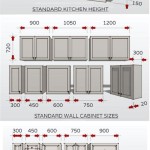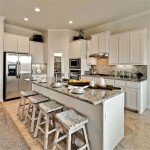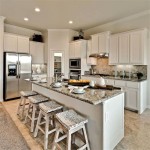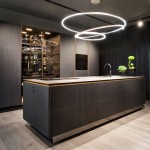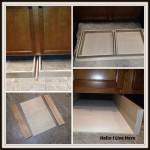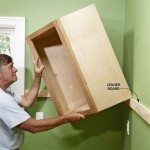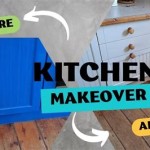Kitchen Cabinet Manufacturing: A Comprehensive Overview
Kitchen cabinets, a cornerstone of both residential and commercial kitchen design, are fundamental to functionality, storage, and aesthetics. The process of kitchen cabinet manufacturing encompasses a complex interplay of design, material selection, construction techniques, and finishing processes. This article provides a comprehensive overview of the key aspects involved in kitchen cabinet manufacturing, detailing the materials used, the different types of construction, and the various finishing options available.
The modern kitchen cabinet manufacturing industry is a multifaceted sector, incorporating both traditional woodworking methods and advanced technological processes. Manufacturers cater to a wide range of customer needs, offering everything from stock cabinets designed for affordability and quick installation to custom-designed cabinets tailored to specific spatial requirements and design preferences. Understanding the intricacies of the manufacturing process is crucial for both industry professionals and consumers alike, allowing for informed decision-making when selecting and specifying kitchen cabinets.
The scope of kitchen cabinet manufacturing includes numerous ancillary processes. These encompass component sourcing, quality control, inventory management, and efficient logistical operations to ensure timely delivery of finished products. The industry is also heavily influenced by trends in interior design, sustainability concerns, and changing consumer preferences. Therefore, manufacturers are continually adapting their practices and product offerings to remain competitive and meet the evolving demands of the market.
Material Selection in Kitchen Cabinet Manufacturing
The choice of materials is a critical determinant of the durability, aesthetics, and cost of kitchen cabinets. Cabinet components are typically categorized into face frames, boxes (or carcasses), doors, and drawers, and each component may be constructed from different materials depending on the desired properties and budget constraints.
Solid wood is a traditional and highly desirable material for kitchen cabinets, prized for its natural beauty, strength, and longevity. Common wood species used in cabinet manufacturing include maple, oak, cherry, birch, and walnut. Each species possesses unique grain patterns, color tones, and hardness characteristics that influence the overall aesthetic and durability of the finished cabinet. Solid wood is often used for face frames, doors, and drawer fronts, providing a premium look and feel. However, solid wood is susceptible to expansion and contraction due to changes in humidity, which can lead to warping or cracking if not properly sealed and finished.
Plywood is an engineered wood product composed of multiple layers of wood veneer glued together. It offers superior dimensional stability compared to solid wood, making it less prone to warping or cracking. Plywood is commonly used for cabinet boxes (carcasses) and drawer boxes, providing a strong and stable structure. The quality of plywood varies depending on the type of wood veneer used, the number of layers, and the adhesive used in its construction. High-grade plywood offers excellent strength and resistance to moisture, while lower-grade plywood may be more prone to delamination or warping.
Medium-density fiberboard (MDF) is another engineered wood product made from wood fibers bonded together with resin under heat and pressure. MDF has a smooth, uniform surface, making it an ideal substrate for painting or laminating. It is commonly used for cabinet doors and drawer fronts, particularly in painted cabinet designs. MDF is less expensive than solid wood or plywood but is also more susceptible to moisture damage. Therefore, it is important to properly seal and finish MDF components to prevent swelling or warping.
Particleboard, also known as chipboard, is the least expensive engineered wood product used in cabinet manufacturing. It is made from wood chips glued together with resin under pressure. Particleboard is often used for cabinet boxes and shelving in budget-friendly cabinet options. However, particleboard is less durable and more susceptible to moisture damage than plywood or MDF. It also has a tendency to sag under heavy loads. Therefore, particleboard is typically used in conjunction with edge banding or lamination to improve its durability and appearance.
In addition to wood-based materials, various non-wood materials are also used in kitchen cabinet manufacturing. Thermofoil is a thin vinyl film that is heat-sealed to MDF or particleboard, creating a durable and easy-to-clean surface. Laminate is a durable plastic sheet that is glued to a substrate, such as plywood or particleboard. Laminate is available in a wide range of colors, patterns, and textures, making it a versatile option for cabinet surfaces. Metal, glass, and acrylic are also used in cabinet manufacturing for decorative accents, door inserts, and hardware components.
Construction Methods for Kitchen Cabinets
The construction method used in kitchen cabinet manufacturing significantly impacts the durability, stability, and overall quality of the finished product. There are three primary construction methods commonly employed: framed, frameless, and inset.
Framed cabinets, also known as face-frame cabinets, feature a solid wood frame attached to the front of the cabinet box. The frame provides structural support and a surface for attaching doors and drawers. Framed cabinets are a traditional construction method, offering a classic and durable design. The frame can be either overlay, where the doors and drawers partially cover the frame, or inset, where the doors and drawers fit flush within the frame. Framed cabinets are typically more expensive than frameless cabinets due to the additional material and labor required for their construction. They are considered more traditional in style.
Frameless cabinets, also known as European-style cabinets, lack a face frame. The doors and drawers are attached directly to the edges of the cabinet box. Frameless cabinets offer a clean, modern aesthetic and provide more accessibility to the interior of the cabinet. They also offer slightly more storage space due to the absence of the frame. A full overlay door style is standard with this construction type. Frameless cabinets are typically less expensive than framed cabinets, but the quality of the cabinet box construction is crucial for ensuring stability and durability.
Inset cabinets are characterized by doors and drawers that fit flush within the face frame of the cabinet. This construction method requires precise measurements and tight tolerances, making it the most expensive and labor-intensive option. Inset cabinets offer a clean, sophisticated look and are often considered a high-end choice. Due to the tight fit, inset cabinets can be more susceptible to expansion and contraction issues related to humidity changes, requiring careful material selection and construction techniques.
Beyond the overall frame structure, the way individual components are joined together also significantly influences the cabinet's strength and longevity. Common joinery methods include dado joints, rabbet joints, dovetail joints, and pocket-screw joints. Dado joints and rabbet joints are typically used to join cabinet sides to the top, bottom, and back panels, creating a strong and stable box. Dovetail joints are known for their exceptional strength and are commonly used to join drawer boxes. Pocket-screw joints are a faster and more economical method for joining cabinet components, but they may not be as strong as traditional joinery methods.
Finishing Processes in Kitchen Cabinet Manufacturing
The finishing process is a crucial step in kitchen cabinet manufacturing, protecting the cabinet surfaces and enhancing their aesthetic appeal. Various finishing options are available, each offering different levels of durability, aesthetics, and cost. The choice of finish depends on the desired look, the type of material used, and the intended use of the cabinets.
Painting is a popular finishing option for kitchen cabinets, offering a wide range of color choices and design possibilities. Painted cabinets are typically constructed from MDF or maple wood, which provide a smooth, uniform surface for painting. The painting process involves multiple steps, including priming, sanding, and applying several coats of paint. A clear coat finish is often applied to protect the paint and enhance its durability. Painted cabinets are relatively easy to clean and maintain, but they can be more prone to chipping or scratching than stained cabinets.
Staining is a finishing option that enhances the natural beauty of wood grain. Stains penetrate the wood surface, adding color and depth while allowing the grain pattern to remain visible. Stained cabinets are typically made from solid wood, such as oak, cherry, or maple. The staining process involves applying a stain, wiping off the excess, and then applying a clear coat finish to protect the stain and enhance its durability. Stained cabinets offer a warm, natural look and are relatively resistant to scratches and dents. However, the color options for stained cabinets are limited to the natural tones of the wood.
Laminating is a finishing process that involves applying a thin layer of plastic or paper laminate to a substrate, such as plywood or particleboard. Laminate is available in a wide variety of colors, patterns, and textures, including wood grain, solid colors, and abstract designs. Laminate cabinets are durable, easy to clean, and relatively inexpensive. However, laminate is susceptible to chipping or peeling along the edges, and it can be difficult to repair if damaged.
Thermofoil is a finishing process that involves heat-sealing a thin layer of vinyl film to MDF or particleboard. Thermofoil cabinets are seamless and easy to clean, and they are available in a variety of colors and styles. Thermofoil is a relatively inexpensive finishing option, but it is also susceptible to heat damage. Therefore, thermofoil cabinets should not be placed near heat sources, such as ovens or stovetops.
In addition to these primary finishing options, various specialty finishes are also available, such as distressing, glazing, and antiquing. These finishes are used to create a unique, custom look for kitchen cabinets. Distressing involves intentionally damaging the cabinet surfaces to create a weathered or aged appearance. Glazing involves applying a thin layer of colored glaze to the cabinet surfaces to highlight the details and add depth. Antiquing involves applying a series of stains and glazes to create a vintage or antique look.

Cabinet Manufacturing Metropolitan Cabinets

Cabinet Manufacturing Metropolitan Cabinets

Cabinet Manufacturing Metropolitan Cabinets

Kitchen Cabinet Factory Customized Manufacturer

Blog Vina

Comprehensive Guide To Importing Kitchen Cabinets From China

Custom Kitchen Cabinets Manufacturer From China Pa

Top 10 China Kitchen Cabinet Factory Pa

About Us Vina

How To Choose Kitchen Cabinets When Remodeling
Related Posts

